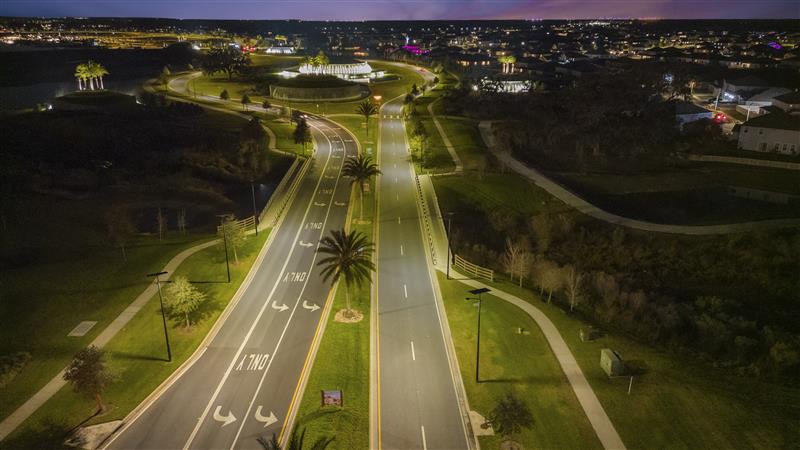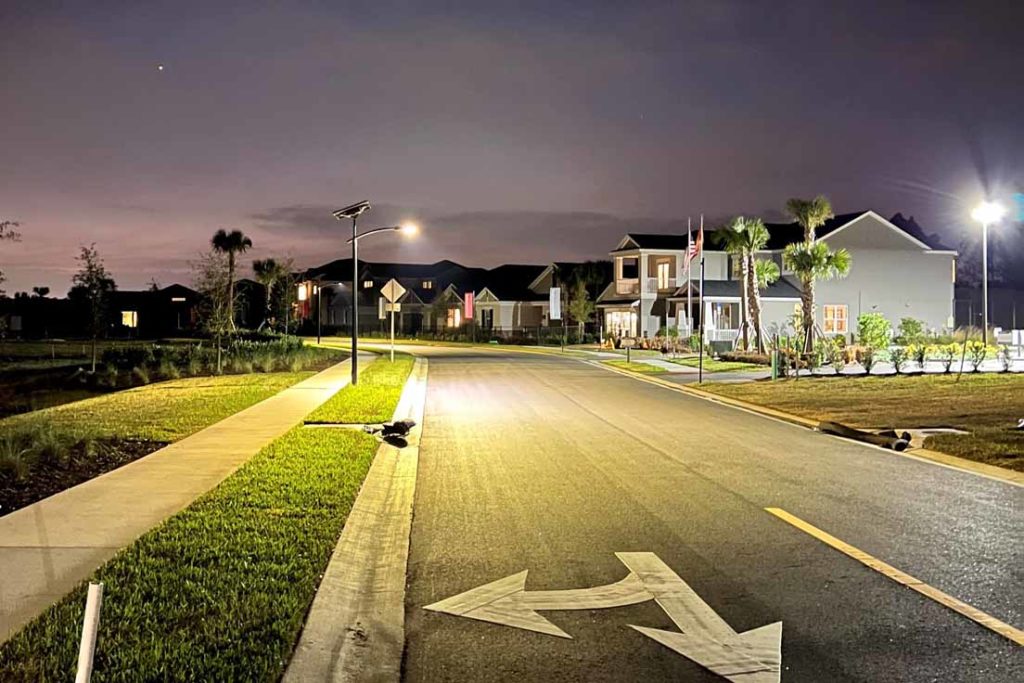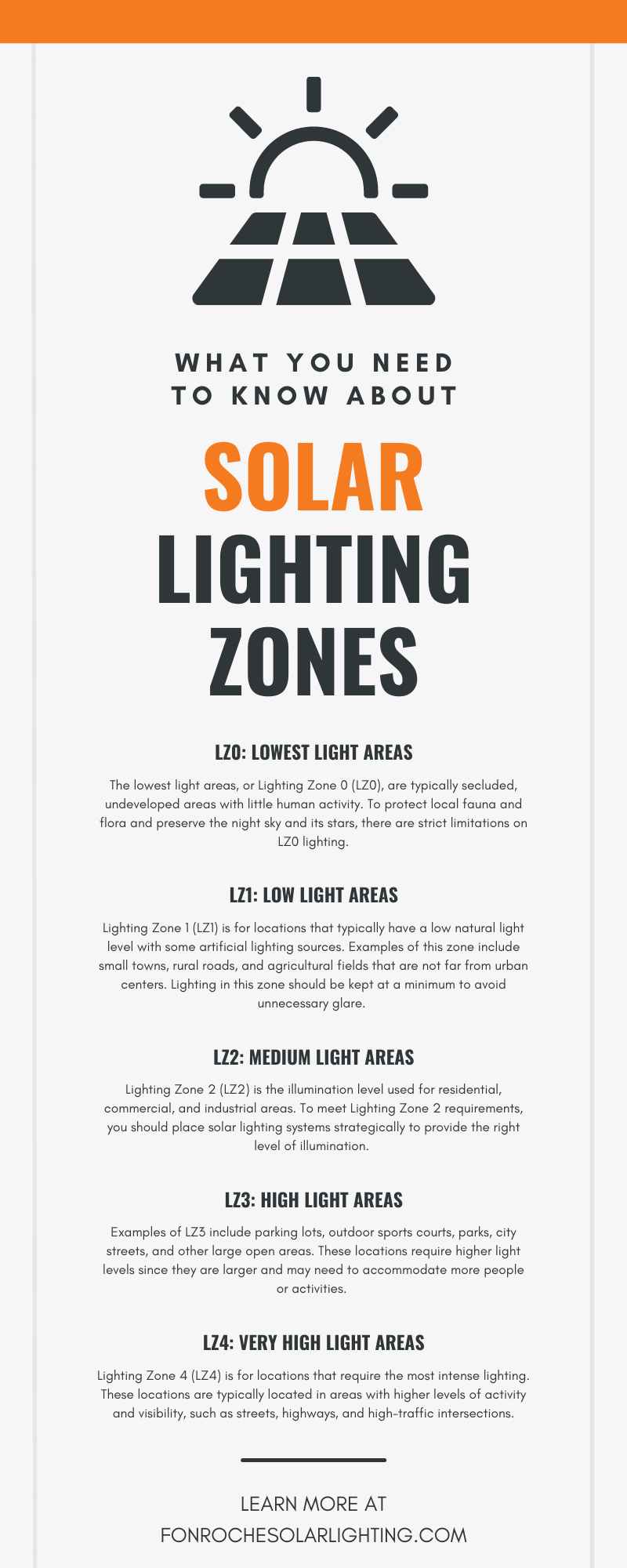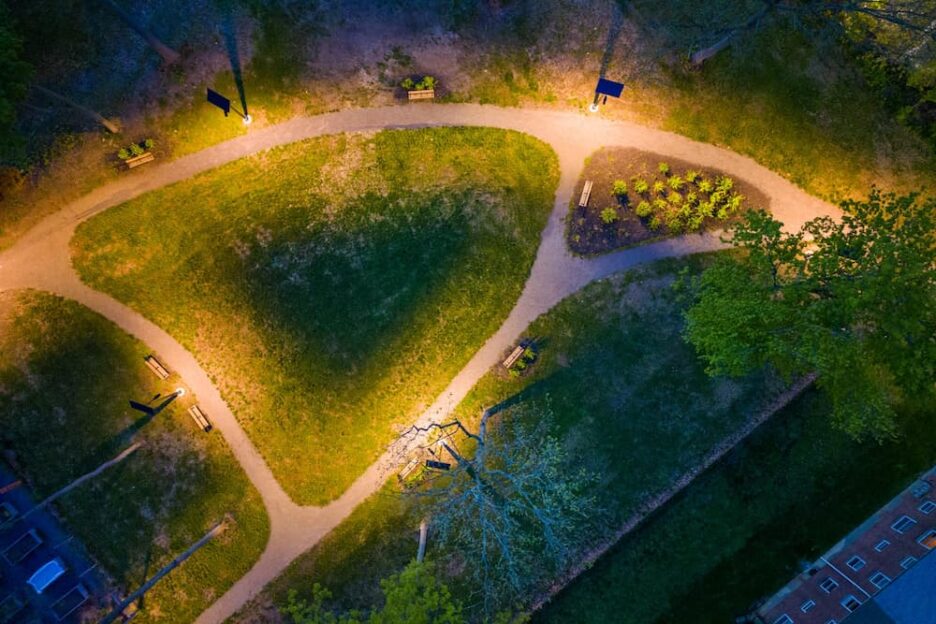Understanding Zoning Regulations and Municipal Solar Lighting Requirements
As cities increasingly adopt solar lighting systems, it’s crucial for municipal planners, public works directors, and city councils to be aware of the zoning regulations that impact these installations. Solar lighting zones define the lighting needs and restrictions for specific areas, based on factors such as location, light pollution control, and environmental concerns. Understanding these zones is essential for ensuring compliance with regulations and for creating energy-efficient, cost-effective lighting solutions that benefit your community.
In this article, we’ll explore what municipal solar lighting zones are, the different zone classifications, and how they impact your project’s planning and implementation. We’ll also cover why these zones exist and how they can guide you toward the best solar street lighting solutions for cities.
What Are Solar Lighting Zones?
Lighting zones for cities: Tailoring solar solutions to meet local requirements
Solar lighting zones categorize areas based on their specific lighting needs and environmental conditions. These zones help municipalities design solar lighting systems that are appropriate for the surrounding environment and compliant with local regulations. Different lighting zones reflect the varying levels of lighting needed in different types of areas, such as rural roads, city streets, parks, and commercial spaces.

Each lighting zone considers factors such as ambient light levels, human activity, and environmental protection. By following these guidelines, cities can ensure their solar lighting solutions provide the right amount of light without causing unnecessary light pollution or harming local ecosystems.
Types of Solar Lighting Zones
LZ0: Minimal or Dark-Sky Areas
Preserving the natural environment with low-intensity lighting
Lighting Zone 0 (LZ0) represents areas with minimal human activity and low natural light levels, such as nature reserves, parks, or conservation areas. These areas often have strict limits on artificial lighting to protect wildlife and maintain natural darkness, which is vital for nocturnal ecosystems. Dark-sky-certified fixtures are preferred in these zones to avoid light pollution and preserve the visibility of stars.
Solar lighting is an ideal solution for LZ0 zones because it eliminates the need for electrical infrastructure and reduces the risk of environmental disruption. Solar-powered lights can be strategically placed in remote locations, offering safe, low-intensity illumination while minimizing light spill and preserving the natural environment.
LZ1: Low-Light Areas
Balancing safety and environmental protection
Lighting Zone 1 (LZ1) applies to areas with limited artificial lighting, such as rural roads, small towns, and agricultural zones near urban centers. These areas require careful attention to avoid excessive lighting that could cause glare or disrupt local wildlife.
Municipalities should use solar lighting solutions that adhere to LZ1 standards, providing only the necessary amount of light for safety. Light trespass—the spillover of light beyond the intended area—should be minimized, and fixtures should aim to blend with the natural light levels of the environment. Shielded solar lights are effective in this zone, preventing unnecessary illumination of adjacent properties and minimizing light pollution.
LZ2: Moderate-Light Zones
Ensuring safe illumination in residential and commercial areas
Lighting Zone 2 (LZ2) encompasses areas such as residential neighborhoods, public parks, and commercial zones where moderate levels of lighting are needed. These areas see moderate foot traffic and require consistent lighting to enhance safety, particularly in pedestrian pathways, parking lots, and walkways.
For LZ2, dusk-to-dawn solar lighting systems are a reliable choice, ensuring that lights turn on automatically when needed and conserve energy during daylight hours. The goal in these areas is to provide sufficient illumination for safety without creating an overly bright or disruptive environment. Careful positioning of solar lights is important to avoid obstructions like trees or buildings that might block the light.

LZ3: High-Activity Areas
Providing ample illumination for busy public spaces
Lighting Zone 3 (LZ3) applies to urban streets, parking lots, sports courts, and large public spaces where higher levels of lighting are required to accommodate increased activity. Municipalities need to focus on ensuring that these areas are well-lit to support safety, visibility, and usability during nighttime hours.
Solar lighting is an excellent solution in these zones, as it provides the high light levels necessary for busy public spaces while offering long-term cost savings. By eliminating the need for grid-tied power, solar lighting systems reduce ongoing energy costs and maintenance requirements, making them ideal for large-scale urban areas.
LZ4: Maximum Illumination for Critical Zones
Optimal lighting for high-traffic and high-visibility areas
Lighting Zone 4 (LZ4) represents areas that demand the highest levels of illumination, such as highways, major intersections, and high-traffic pedestrian areas. In these zones, visibility is critical for ensuring public safety, and lighting solutions must be highly reliable and efficient.
Solar lighting systems for LZ4 areas must provide intense, consistent illumination while maintaining energy efficiency. Given the demands of these zones, it’s essential to choose solar lighting products with proven reliability and durability. These systems help municipalities meet high lighting requirements while minimizing energy consumption and avoiding excessive light pollution.
Determining the Right Lighting Zone for Your Project
Understanding local regulations to ensure compliance and efficiency
To select the correct solar lighting zone for your project, you’ll need to assess the ambient light levels of the area and review any local or state regulations that apply. Consulting with a solar lighting expert can help you interpret zoning rules and ensure that your lighting plan aligns with legal standards and environmental considerations.
Once the correct zone is identified, your next step is to design a solar lighting solution that provides the necessary light levels while minimizing energy consumption, light pollution, and maintenance costs. Solar lighting systems can be tailored to meet the specific needs of each zone, ensuring that your project enhances public safety and complies with environmental regulations.
Conclusion: Solar Lighting Zones and Sustainable Urban Planning
Solar lighting zones provide a crucial framework for cities to design lighting solutions that balance the needs of safety, environmental protection, and energy efficiency. By understanding and applying these zoning regulations, municipalities can implement solar lighting systems that improve public spaces while adhering to lighting standards.
At Fonroche Lighting America, we offer solar street lighting systems tailored to meet the specific requirements of any zone. Our durable, energy-efficient solar lighting products ensure that your city can achieve compliance, reduce energy costs, and contribute to a more sustainable future. Contact us today to explore how our solar lighting solutions can meet your city’s unique needs.


